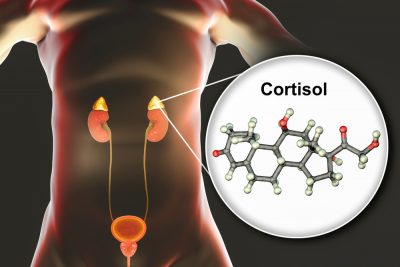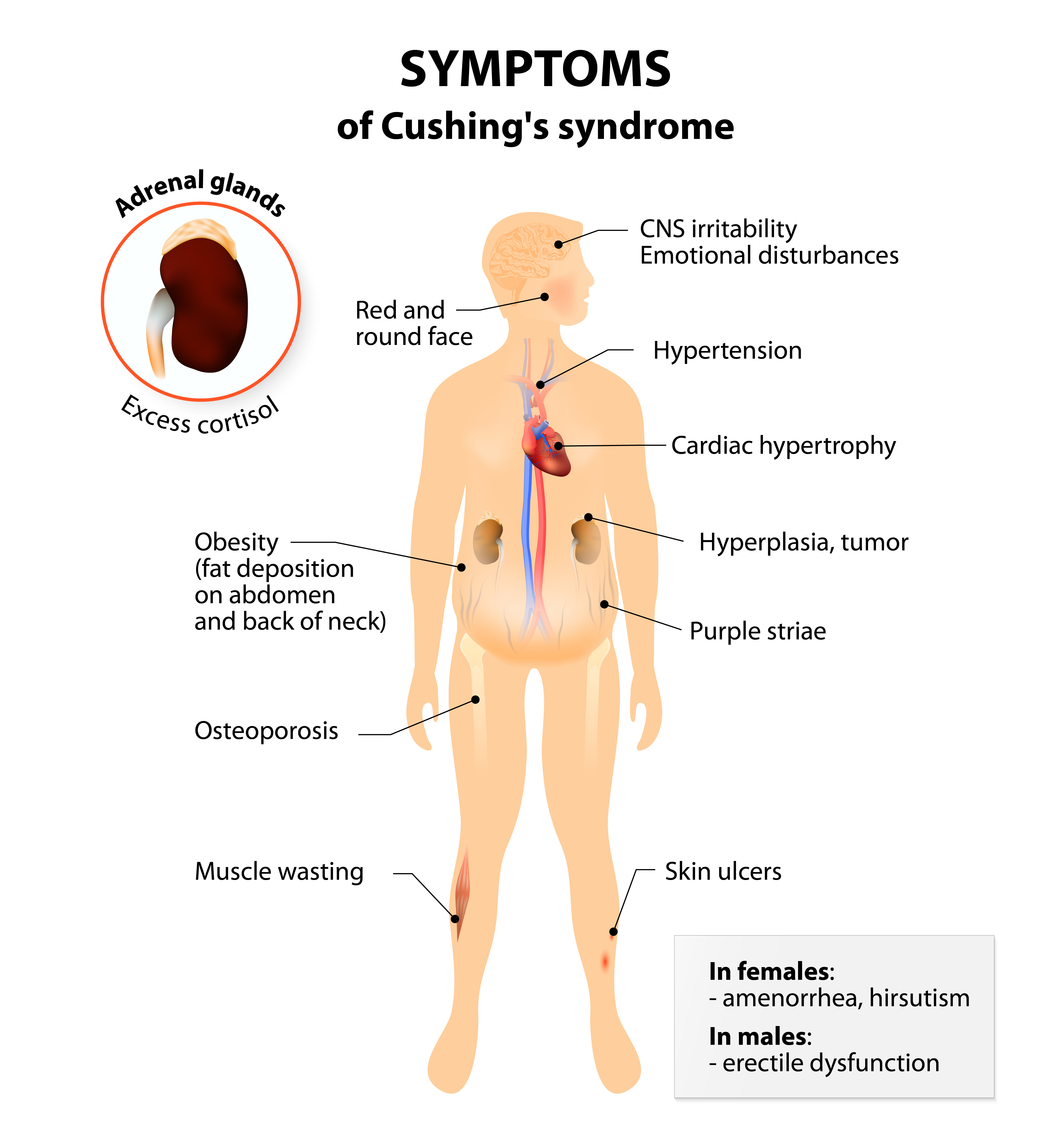The Cushing’s syndrome, also known as hypercortisolism was first discovered in 1932 by an American neurosurgeon Henry Cushing. He explained the clinical discovery that provided the link between specific physical characteristics (e.g. abnormal obesity of the face and trunk) and a specific type of pituitary tumor.
Cushing syndrome is a disorder that occurs when the body is exposed to a high level of the stress hormone called cortisol over a long period of time. Cortisol is gotten into the body through the use of steroid drugs containing cortisol and also due to excess production from cholesterol in the two adrenal glands located on top of each kidney.
production from cholesterol in the two adrenal glands located on top of each kidney.
What is cortisol?
Cortisol is a stress hormone released by the adrenal gland that increases sugar in the bloodstream, enhances the brain’s use of glucose, and increases the availability of substances that repair tissue. Cortisol is very important to the body and helps the brain to deal with stressful situations. Although it has been linked to a variety of health issues such as high blood pressure, and stroke.
It is better to understand it than to get rid of it as deficiency causes fatigue, weight loss, and dizziness. Increased production of cortisol in the body also causes a number of symptoms such as weight gain, slowed healing, muscle weakness, and severe fatigue. High cortisol in the body is referred to as Cushing’s syndrome. Several factors contribute to the increase of cortisol in the body.
- The overactive pituitary gland leads to the over secretion of cortisol from the adrenal glands.
- Corticosteroid medications with high cortisol levels used to treat arthritis and cancer lead to the accumulation of cortisol when used over a long period of time.
- Women have been known to experience an increase in cortisol levels due to circulating estrogen and pregnancy.
- Severe stress leads to over secretion of cortisol due to as a result of numerous signals triggered by hormones and nerves.
Excess cortisol is clearly harmful to the body, and should be taken care of immediately you notice related symptoms, some proven natural ways to lower your cortisol level includes;
- Adhere to a moderate sleep schedule of 6-8 hours per day.
- Avoid depressing and dangerous situation that could cause stress.
- Eat healthy foods and avoid processed and canned foods. Also avoid excess intake of sugary products like alcoholic beverages and soda, because sugar is known to trigger cortisol release.
- Avoid dehydration, regular hydration helps to reduce cortisol levels.
- Engage in fun activities and form good relationships with people, as this kind of activity lowers blood pressure and eliminates the need for cortisol release. Laughter has also been known to cause a decrease in cortisol levels.
How to diagnose Cushing‘s syndrome
Series of physical and medical exams need to be performed in order to have conclusive proof of Cushing’s syndrome as some are really difficult to diagnose especially endogenous Cushing’s syndrome. Urine, saliva, or blood tests can be used to diagnose Cushing’s syndrome by analyzing cortisol levels in them. High cortisol levels usually indicated Cushing syndrome in a patient. In some cases, x-ray exams or pituitary glands are useful for locating tumors.
Common signs and symptoms of Cushing’s syndrome include; Most men who have Cushing’s syndrome usually experience erectile dysfunction and decreases libido; increased pigmentation of the skin, acne, and stretch mark; absence of menstruation or infrequent menstruation in women; increased anxiety depression, and insomnia; muscle weakness and bone loss leading to frequent fractures; abnormal fat deposits is noticed on the face and between the shoulders.
How to deal with Cushing Syndrome
Treatment for Cushing’s syndrome varies depending on the cause of the syndrome. The treatments are usually aimed at reducing the cortisol level in the body. Some common methods for treating Cushing’s syndrome include;
- Surgery: The usual first method of treatment for Cushing’s syndrome is surgery. In cases where The Cushing’s syndrome is a tumor, a surgical operation by a neurosurgeon is recommended. Small incisions with the invasive surgical techniques are applied through the nose if the tumor is present in the adrenal gland, lungs, or pancreas, and sometimes a standard operation is performed.
- Medication: Medications are usually prescribed in place of surgery and radiation therapy. Some medications are also given before surgery to prevent surgical complications. Some medication diagnosed by experts to control excessive production of cortisol in the body includes; mitotane (lysodren), ketoconazole, and mitotane (lysodren), mifepristone (korlym Mifeprex) is approved for people with crushing syndrome of type 2 diabetes or glucose intolerance.

- Radiation therapy: radiotherapy is usually administered to patients with Cushing’s syndrome when they are not cured by surgery cases where candidates have Cushing’s syndrome that can’t be treated by surgery.
Cortisol is very important to the body but too much of it can be problematic, hence, it is important to monitor your cortisol level and ensure that you don’t have too much of it stored in your body. The most effective way to avoid ever having Cushing’s syndrome is by preventing the accumulation of cortisol.



